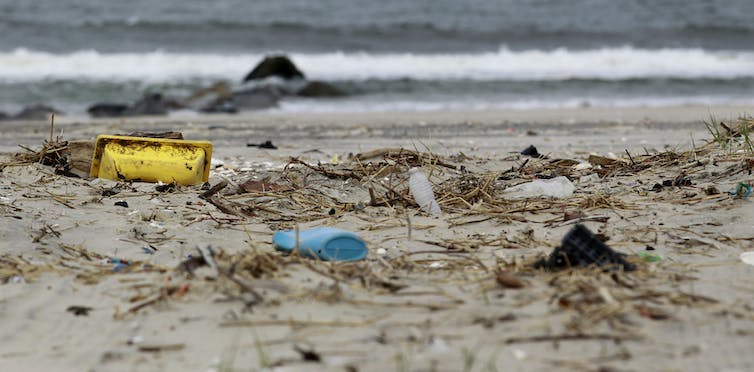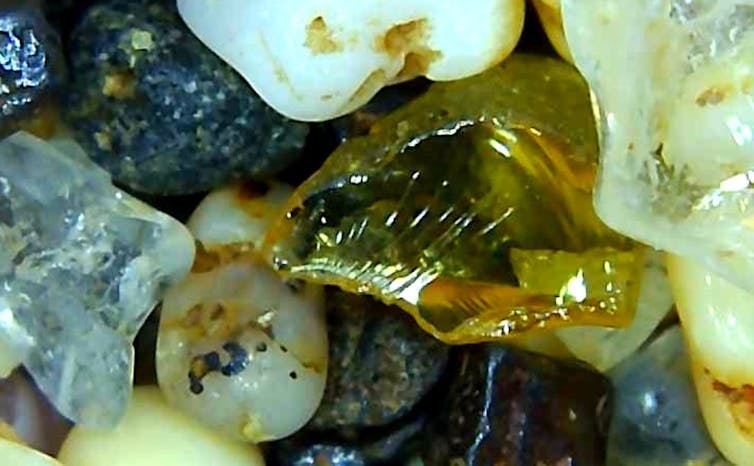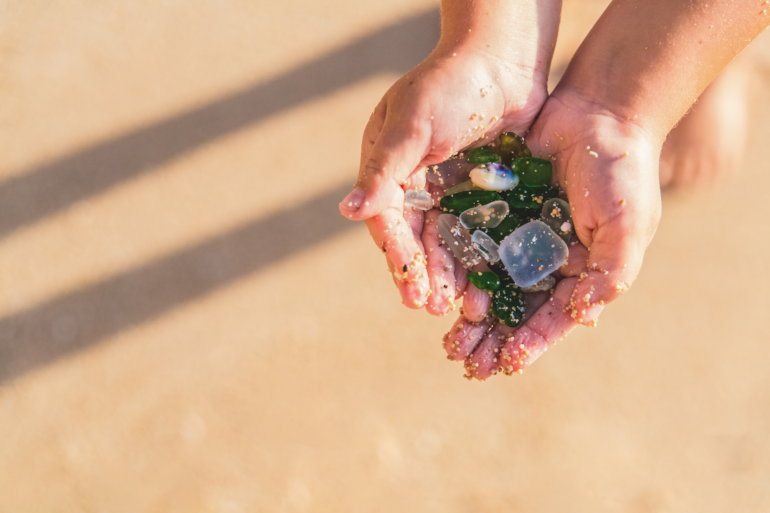When you stroll along a beach, you may look down and spot colorful bits of worn glass mixed in with the sand. But the little treasures you’ve found actually began as discarded trash.
As an environmental science professor, I find these gifts from the sea particularly interesting. I have analyzed sand from across the world and added samples, including one of sea glass, into a collection for the environmental, earth and atmospheric sciences at UMass Lowell. The way this trash-turned-treasure washes up on beaches reflects an intersection between human activity and Earth’s natural processes.
A history of glass
Prior to the proliferation of single-use plastics starting in the early 1970s, glass was the container of choice. People in ancient Egypt, Greece and Rome used glass for windows, bottles, plates, bowls and more.
In the mid-20th century, people across the United States had milk bottles delivered to their homes, and soda came in glass bottles. After these glass containers served their purpose, users would toss them into a dump.
Before the environmental movements of the 1960s, trash dumps in the United States were often left open and exposed to rain and wind. As many of these trash heaps sat near waterways or coves, runoff would wash the trash – including discarded glass bottles – into the ocean.
On their way to the ocean, glass bottles would run into rocks and other objects, which would break the glass into smaller pieces. When these fractured bits traveled close enough to the coast, high tides and incoming waves would wash them out to sea.
Wave action causes these fragments to slide and roll along the sandy seafloor. It’s this movement that rounds the glass’ sharp edges and gives the once smooth and clear glass its pitted, frosted appearance.

With the shift to single-use plastic, beaches have more plastic waste and less sea glass.
AP Photo/Julio Cortez
Sand to glass, then back to the sand
All glass, including sea glass, begins as sand, specifically quartz sand. Quartz sand is clear or white – you can see it on many beaches along Florida’s Gulf Coast.
To make glass from sand, refiners first purify their quartz sand using both physical and chemical processes to remove all minerals but quartz. They then melt the remaining quartz sand, add a bit of soda ash and limestone to increase the malleability and strength of the glass, and reform it into bottles, bowls, windows and more.
Because quartz is the foundation of all glass, many of the mineral’s characteristics are reflected in sea glass. The most obvious is its clarity – quartz is nearly translucent – but also how quartz fractures or breaks. Quartz fractures tend to be a special type of break, called a conchoidal fracture. This type of fracture begins from a single point and breaks outwardly in a semicircular shape, so that the broken surface kind of looks like the inside of a seashell.




